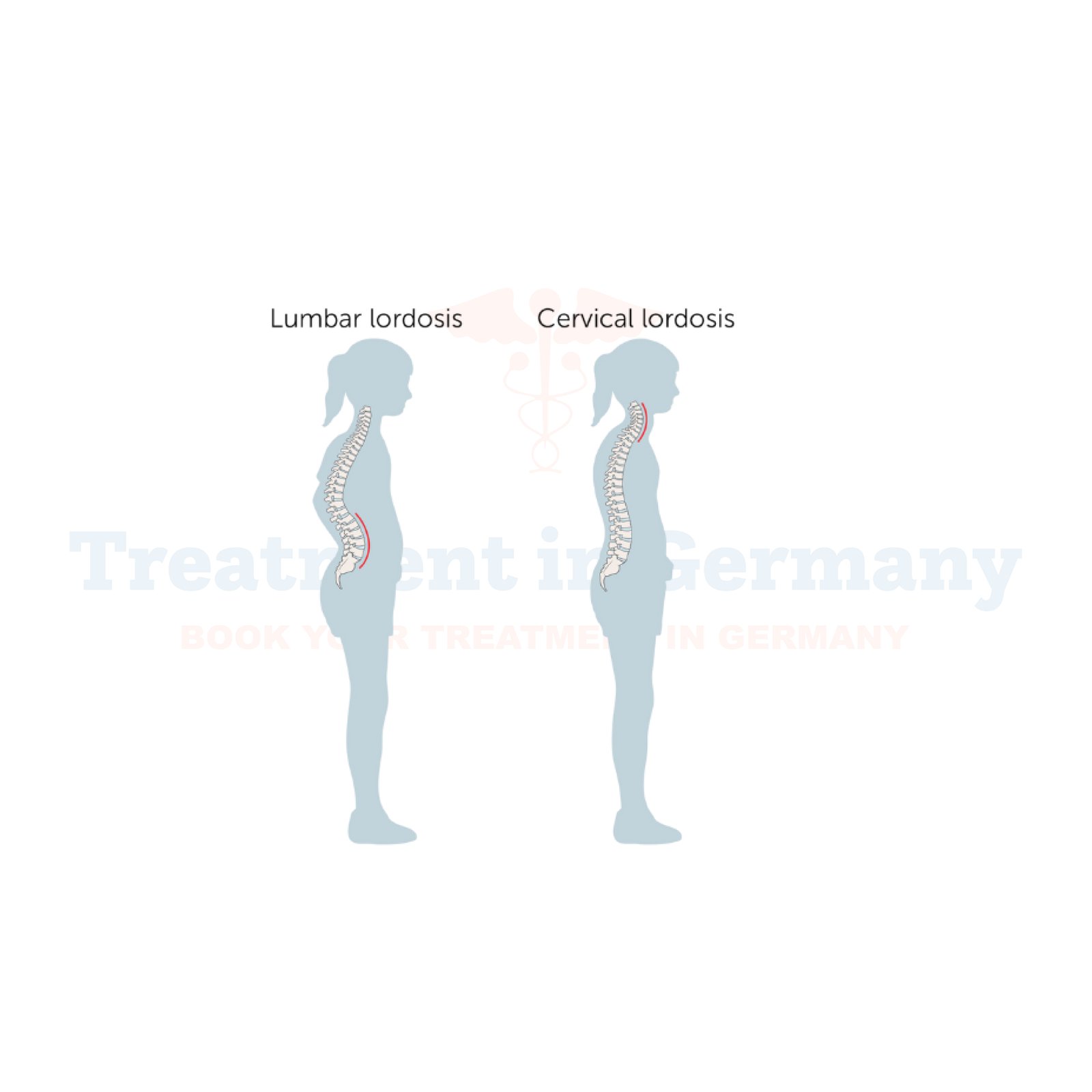Lordosis Treatment in Germany
Achieving a healthier spine starts here. Explore premium Lordosis treatment in Germany to enhance your posture and overall well-being.
What Is Lordosis?
Lordosis refers to the natural inward curve of the spine in the cervical (neck) and lumbar (lower back) regions. This curve is essential for maintaining good posture, absorbing shock during movement, and distributing weight evenly across the spine. However, excessive curvature can lead to discomfort and even health challenges, emphasizing the need for proper diagnosis and care.
Side Effects of Lordosis
Excessive lordosis can have various physical impacts, including:
- Lower Back Pain: Strain on the lumbar region can result in chronic discomfort or sharp pain.
- Visible Arching: Pronounced curvature in the lower back or neck when viewed from the side.
- Limited Mobility: Severe cases can hinder flexibility and range of motion.
- Balance Issues: Altered balance resulting from misaligned posture.
- Fatigue: Misaligned posture strains supporting muscles, leading to quicker exhaustion.
Causes of Lordosis
Understanding the root causes helps in effective treatment. Possible contributors include:
- Muscle Weakness or Imbalance: Weak core or hip muscles can affect spinal alignment.
- Obesity: Extra weight pulls the spine out of its natural curve.
- Poor Posture Habits: Prolonged sitting or improper posture amplifies curvature issues.
- Spinal Conditions: Congenital or acquired issues, such as scoliosis or osteoporosis.
Diagnosis of Lordosis
Early detection is vital for effective treatment. Diagnosis typically involves:
- Physical Examination: A specialist evaluates your posture manually.
- Imaging Tests: X-rays, MRIs, or CT scans provide a clear view of spinal curvature.
- Range of Motion Tests: To assess flexibility and impact on movement.
Lordosis Treatment in Germany
Germany is at the forefront of providing cutting-edge solutions for spinal health. Treatment approaches include:
- Physical Therapy: Core and flexibility exercises to restore alignment.
- Bracing (for severe cases): Helps correct posture and ease pressure on the spine.
- Medication: Pain relievers or anti-inflammatories to alleviate symptoms temporarily.
- Surgical Intervention (for advanced cases): Minimally invasive procedures to realign the spine.
Prevention and Management
Reduce the risk of Lordosis or enhance its management by incorporating these habits:
- Strengthen Core Muscles: Consistent core workouts stabilize and support the spine.
- Practice Good Posture: Maintain a balanced position while sitting or standing.
- Maintain a Healthy Weight: Reduce added stress on the spine.
- Regular Stretching: Prevent tightness by engaging in daily stretches.
Why Choose Treatment in Germany?
Germany is globally recognized for its advanced medical infrastructure and tailored care. Here's why it stands out as your treatment destination:
- State-of-the-Art Technology: Access to the latest diagnostic tools and treatment options.
- Highly Skilled Specialists: Expert spinal care from world-renowned orthopedic surgeons.
- Holistic Care Options: Comprehensive rehabilitation programs ensure long-term success.
- Patient-Centric Approach: Exceptional patient care and customized treatment plans.
- Cost-Efficiency: High-quality care at competitive rates compared to other developed countries.
Conclusion
Don’t wait any longer to relieve discomfort or prevent further complications. Lordosis treatment in Germany combines precision and care to restore your spine’s natural alignment and improve your quality of life. By combining state-of-the-art technology, a patient-focused approach, and internationally renowned specialists, Germany offers effective solutions tailored to your unique needs. With the expertise available, you can achieve long-lasting results and enjoy a pain-free, more active life. Take the first step today and experience the difference.

.webp)
.webp)
 (1).webp)
 (1).webp)

.webp)
.webp)
 (1).webp)
 (1).webp)
